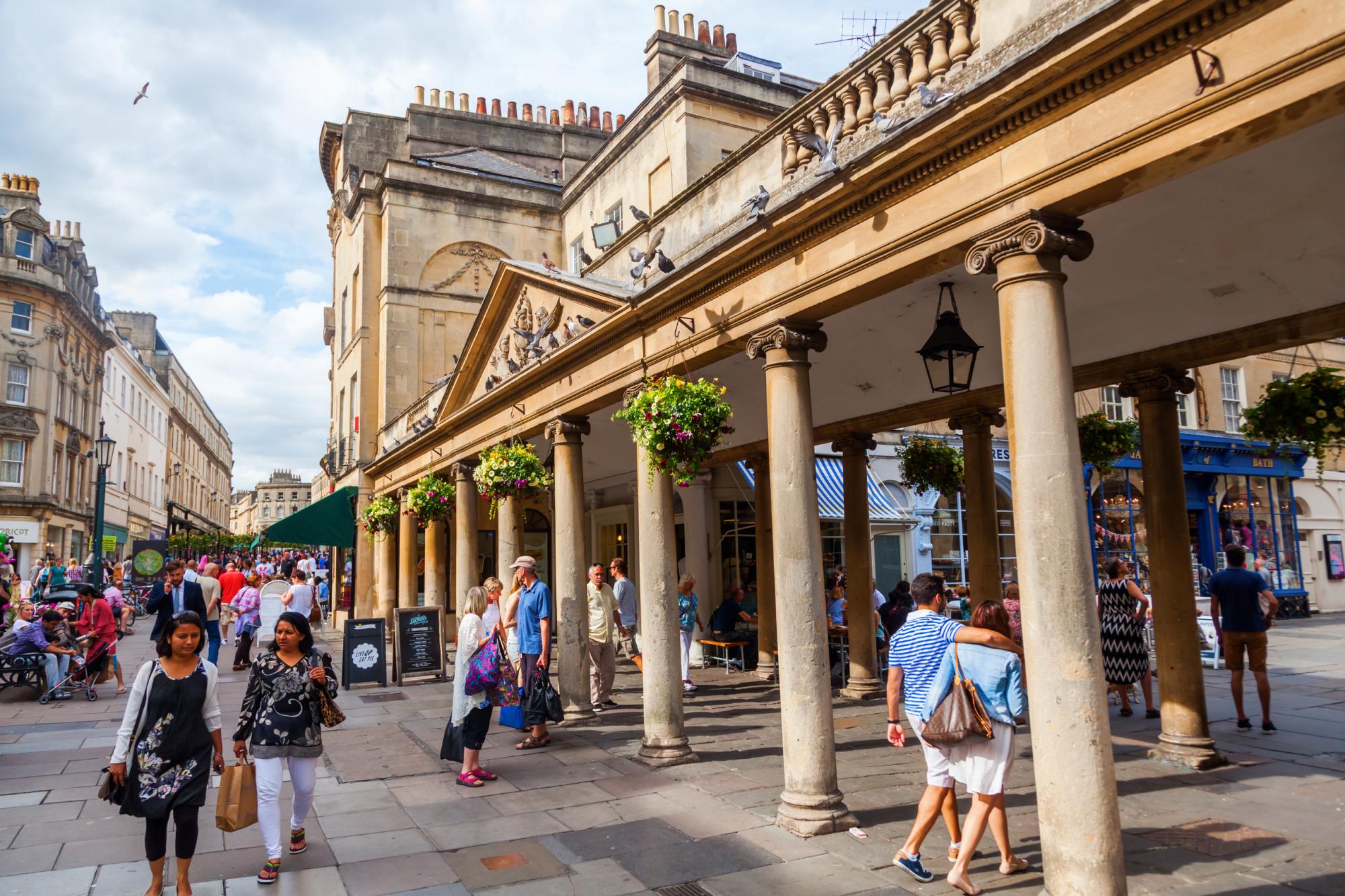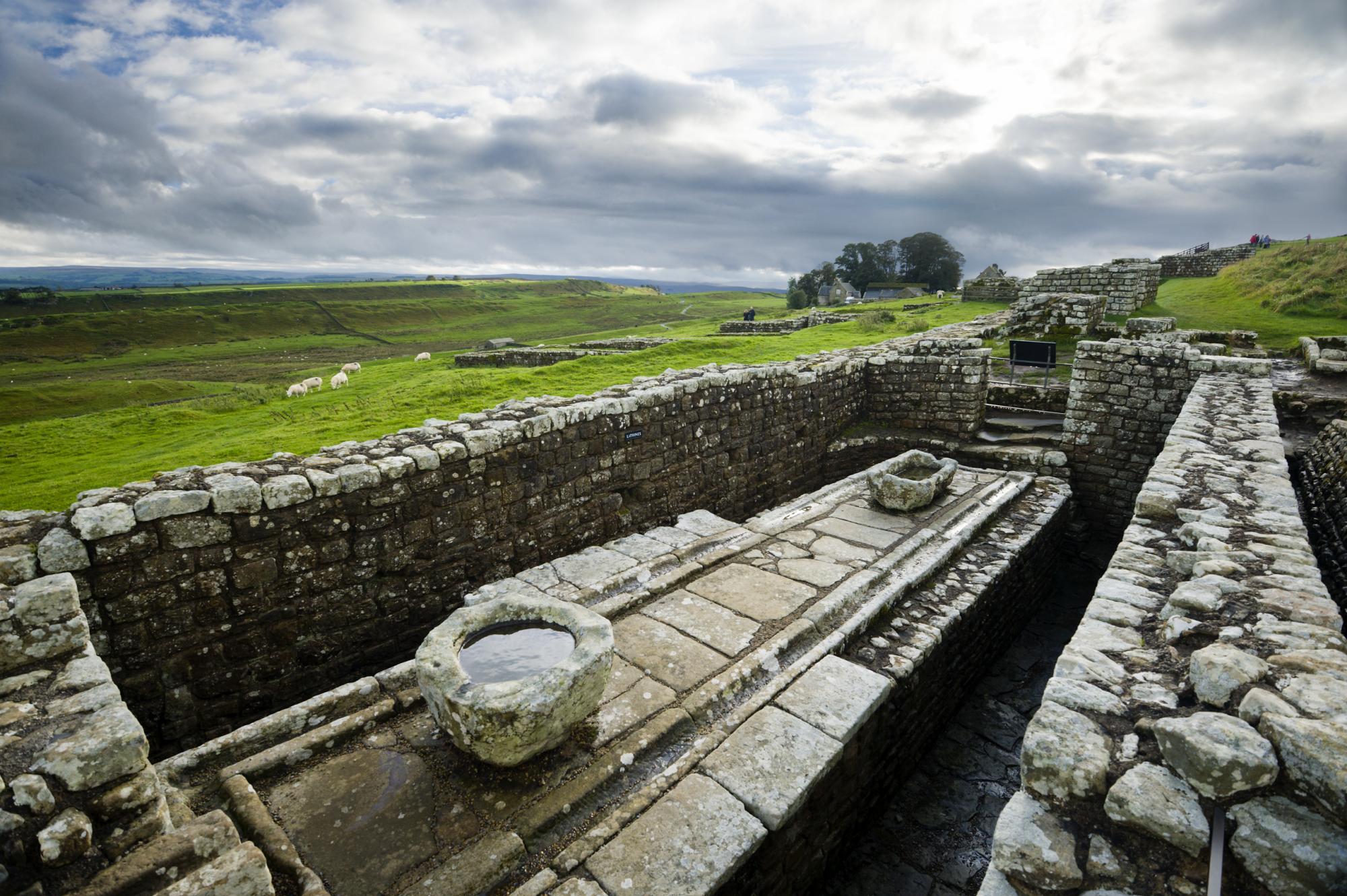Want to make the most of your trip to England, but don't know where to start? No problem, here are three 7-10 day itineraries to give you the right inspiration.
London is the ideal starting point for exploring England by train or car © Franckreporter / Getty Images
Each of these itineraries to visitEngland will give you a different view of this wonderful land, the only thing they have in common is the fulfilment they'll leave you with once you're gone: each itinerary will take you to appreciate and get to know everything that makes it such a special country, from the wildest and most idyllic landscapes, to the charm of historical sites, to the vibrant urban realities.
The must-see stops in England - a 10-day itinerary
A week and a half is enough time to tick off England's most classic and unmissable stops from the list. This itinerary includes the nation's top attractions, from London to the Lakes.
This itinerary will allow you to explore the best of England in ten days © Lonely Planet
Day 1: Discovering London
What better way to start your trip to England than spending a day in its exuberant capital? If you only have one day, get around on foot and see London's iconic landmarks, such as Buckingham Palace, Tower Bridge, Trafalgar Square etc.
How to get from London to Winchester: Drive or take the train to Winchester, direct trains take an hour and leave from Waterloo station.
Day 2: Tour the English Cathedrals
Moving southwest, you can visit the famous cathedrals of Winchester and Salisbury. Winchester is slightly closer to London and is a history buff's dream: King Arthur, Sir Walter Raleigh and Alfred the Great all passed through here. Another 45-minute drive will take you to Salisbury Cathedral and one of only four surviving copies of the Magna Carta.
Gettingfrom Winchester to Bath: hire a car to see the sights on the way to Bath. Don't leave the area without making a diversion to visit the iconic Stonehenge megaliths.
Day 3: A day in Bath
A short hop north-west will take you to the pretty city of Bath, famous for its Roman history and fabulous Georgian architecture. Fans of literature and TV series will find links to Jane Austen and the Netflix series 'Bridgerton'.
How to get from Bath to Oxford: The quickest route to Oxford is by train, leaving from Didcot Parkway station. But if you feel like driving and have some time on your hands, getting to Oxford by car has many upsides. You can drive through the classic English countryside, taking in the scenery of the Cotswolds, making numerous scenic stops along the way.
Day 5: Cultural trip to Oxford
An hour and a half drive or train ride will take you to the ancient seat of learning at Oxford. After absorbing the sounds and atmosphere of this centuries-old university, select a typical English pub where you can relax in front of a book.
If you want to include an excursion, know that only an hour's drive from Oxford is Stratford-upon-Avon. The birthplace of Shakespeare, Stratford is a must-see for fans of the Bard with plenty of must-see attractions.
How to get from Oxford to the Lake District: Returning to London, you can take a direct train from Euston station that will take you to Oxenholme in the Lake District in less than three hours. Alternatively, driving from Oxford to the lakes takes about four hours.
A breath of fresh air in the Lake District after the capital © Stewart Smith Photography / Shutterstock
Sign up for our newsletter! For you weekly travel tips, special offers, stories from around the world and 30% off your first order.
Days 6 and 7: Take refuge in the nature of the Lake District
The Lake District is, deservedly, the UK's most famous national park, a paradise for outdoor enthusiasts: hiking, biking, swimming and, if you stay until after dark, even starry skies to admire.
How to get from the Lake District to York: drive through the Yorkshire Dales National Park to York. By car the route is quicker, otherwise the train journey takes about three hours.
Day 8: Discover the delights of York
History buffs will love York for its Viking legacies and splendid Gothic cathedral (York Minster). The main attraction is the Shambles, a medieval gem and the most photographed alleyway in England.
Getting from York to Cambridge: the last long leg of the itinerary will take you three hours by car or slightly less time by train.
A day on the River Cam in Cambridge is a typically English experience © Eagle_Watch / Shutterstock
Day 9: Punt tour in Cambridge
On your way back to the capital, treat yourself to a stop in Cambridge, one of England's most important university towns. If the weather's nice and you're feeling energetic, hire a punt (a boat driven by a pole) to explore the campus surroundings or join a tour by letting someone else row.
How to get from Cambridge to London: a short train journey of an hour or an hour and a half takes you to the capital.
Day 10: Return to London
Enjoy a last day in London, visiting galleries, museums, parks, markets, attending a show in the West End or relaxing in an East End bar. The best cultural experiences are even free.
A walk along Hadrian's Wall is a journey into England's past © Duncan Andison / Getty Images
The wild side of England - a 10-day itinerary
This itinerary includes a tour of England's best natural landscapes that have inspired generations of poets, writers and composers. Put on your hiking boots and explore some of the UK's most beautiful national parks and typical English countryside. There are different entrances and bases to visit the parks, so journey times and connections may vary. Generally, the driving distance between one stop and the next on the itinerary is a minimum of one and a half hours and a maximum of two and a half hours.
Day 1: Walk along Hadrian's Wall
The itinerary begins at the spectacular Roman remains of Hadrian's Wall, one of the most spectacular legacies of the Classical period in England, where you will explore the ruins of Roman forts and walk, centurion-like, alongside ancient ramparts.
Day 2: Unleash your inner poet in the Lake District National Park
Continue on to Cumbria to admire the high peaks and deep lakes of the Lake District National Park. Once the spiritual home of Wordsworth and the Romantic poets, Lakeland is now a magnet for outdoor enthusiasts, with hikes for all skill levels, as well as cosy inns to refresh yourself and rustic hotels to stay in.
Day 3: Find literary inspiration at the Yorkshire Dales National Park
Head east from the lakes through the Pennine Mountains, the range of hills known as 'the backbone of England', to the green hills and valleys of the Yorkshire Dales National Park. Nearby are the mysterious moors surrounding Emily Brontë's old home in Haworth, one of the settings for Wuthering Heights.
Winnats Pass near Castleton is one of the Peak District's most scenic drives © Mat Robinson / 500px
Day 4: Treat yourself to some relaxation in the hot springs of the Peak District National Park
Travel south through the hills and valleys of the Peak District National Park. Buxton is a great base to stay in: you can enjoy the town's hot springs and descend into the magnificent Poole's Cavern. Don't miss the lovely parks around Chatsworth House near Bakewell, if the weather is favourable.
Day 5: Hear the natural symphony of the Cotswolds
Drive through central England, touching on the Malvern Hills so beloved of Sir Elgar, until you reach the iconic Cotswolds countryside. Taking its name from the rolling hills, this delightful landscape is ideal to explore slowly, whether by car, bike, foot or horseback.
Day 6: Unravel the mysteries of Salisbury Plain
Continue south to enjoy the incredible expanse of Salisbury Plain, home to Stonehenge and other mysterious archaeological sites. Nearby is Avebury, England's second stone circle and a village where you can find cosy pubs to enjoy a pint mid-walk.
Fossils fall from cliffs all along the Jurassic Coast © Mark Godden / Shutterstock
Day 7: Searching for fossils along the Jurassic Coast
Just a few more miles and you'll reach the spectacular Jurassic Coast fossil depository land that stretches all the way into the county of Dorset. There are dozens of loop trails to explore on foot and Lyme Regis is the perfect stop to enjoy the seaside village atmosphere.
Day 8: Spot wild ponies in Exmoor National Park
Continue west to admire the rolling Devon farmland, heather-covered hills and sandy coves of Exmoor National Park. This lovely landscape becomes even more idyllic when wild ponies and deer make an appearance, so make sure you have your camera handy at all times.
Day 9: Relax on the moors of Dartmoor National Park
Visit Dartmoor National Park, amidst 'tor', towering granite reliefs with bizarre shapes, and some of the most breathtaking views in the country. The frequent fog lends the place an additional aura of mystery, making it even more difficult to find your way around. It is easy to see how this park inspired Arthur Conan Doyle when he wrote his novel The Hound of the Baskervilles.
Day 10: Finish with Cornish beaches
To finish, enjoy Cornwall's characteristic scenery: pretty harbours, gorse-covered cliffs and sparkling water bays. End the itinerary at Land' s End, where the English mainland plunges headlong into the restless ocean.
Remains of ancient latrines at Housesteads Fort along Hadrian's Wall © Justin Foulkes / Lonely Planet
Roman England tour - a 7-day itinerary
What did the Romans leave us? Find out on this train journey through time from south to north, 920km of landscapes back through England's history.
Day 1: Hello Londinium
Londinium, the largest city in ancient Britain, was founded by the Romans. For an overview, start with the excellent Roman galleries at the Museum of London, then admire the remains of the 2nd-century amphitheatre at the Guildhall Art Gallery, the Temple of Mithras in the Bloomberg Building and the ancient Roman walls just outside Tower Hill tube station.
How to get from London to Fishbourne: Take the direct train from Victoria station (1 hour 50 minutes).
Day 2: The Roman palaces of Fishbourne
After the Roman conquest of Britain, sumptuous country villas were built with all the latest comforts of the time: an excellent example is Fishbourne Palace, near Chichester. Inside, the mosaics, particularly the famous Dolphin Mosaic, are superlative. The gardens are among the oldest in the UK.
How to get from London to Fishbourne: Take the direct train from Fishbourne to Bath (3 hours).
The façade is Georgian, but the interiors of Bath's ancient baths are Roman © Christian Mueller / Shutterstock
Day 3: Immerse yourself in Bath's baths
It wasn't the Romans who discovered Bath's thermal waters, but it was they who built a facility they called Aquae Sulis. Part of the establishment includes a museum and ancient pools. For a more modern immersion, however, the Thermae Bath Spa is just around the corner.
How to get from Bath to Chester: Take the direct train from Bath (4 hours).
Day 4: Standing in the Chester Amphitheatre
The amphitheatre at Deva Victrix (ancient Chester) was the largest in Britain, built for the entertainment and training of Roman soldiers stationed in the city. The excavated sections include two entrances used by performers. Nearby, in the centre of a former Roman quarry, the Shrine of Minerva holds a sculpture of the goddess of war and craftsmanship.
How to get from Chester to York: Take the direct train from Chester (3 hours).
Day 5: Enjoy Eboracum (for most, York)
When a city becomes the scene of the death of two Roman emperors and the proclamation of a third (Constantine the Great, his statue stands outside York Minster), it automatically earns a place in Roman history. Eboracum, the Roman city of York, was founded by soldiers in 71 AD. Remains from Roman times include the remains of a basilica beneath York Minster and a bathhouse in the Roman Bath pub.
How to get from York to Hadrian's Wall: Take the train to Hexham (1 hour 45 minutes).
The remains of a Roman fortress lie beneath York Cathedral © David Ionut / Shutterstock
Day 6: Patrolling along Hadrian's Wall
Hadrian's Wall was a stone fortification that marked the border of the Empire. Built from AD 122 onwards, the wall stretches (almost) from coast to coast in northern England. Highlights include Housesteads Fort and the site of the discovery of the Vindolanda tablets, handwritten letters by the Romans now in the British Museum. Travel from site to site along the wall on the AD122 bus, which leaves from the town of Hexham.
How to get from Hadrian's Wall to London: trains leave from Hexham back to London, with a change in Newcastle (from 4.5 hours).
Day 7: Back to Londinium
Spend a final day in the capital, admiring some of the best Roman treasures found in England at the splendid British Museum. Go in search of the treasure of Mildenhall, a remarkable haul of Roman silver discovered by a farmer in Suffolk in 1942.
Destination expert AnneMarie McCarthy has reviewed and updated this text for accuracy. Some content has been adapted from the print edition of the Lonely Planet guide.










